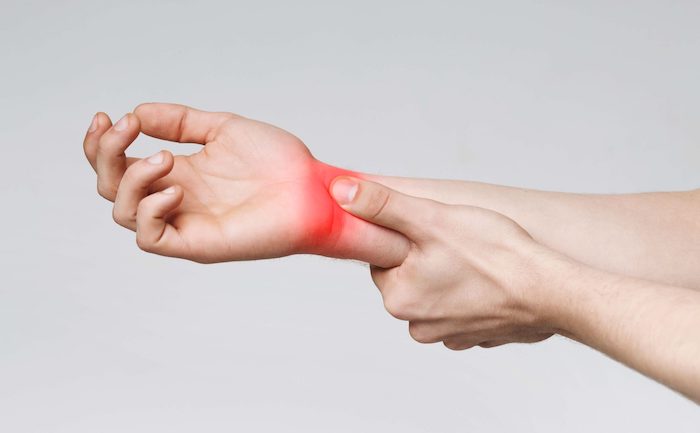
What is Carpal Tunnel Syndrome?
Carpal tunnel syndrome occurs when the median nerve in your wrist becomes squeezed. There can be different elements causing this pressure on the median nerve, but regardless of what is applying pressure, they all fall under carpal tunnel syndrome.
The median nerve is the nerve that gives and receives information from the middle finger, index finger, and thumb. Think of a nerve the way you would a water hose, if you squeeze the hose or you apply external pressure, less water will be able to travel through it. Likewise, when you apply pressure to the nerve, less information can move through it. The information that travels up and down the nerve includes sensation and commands such as motion. So when you disrupt this flow of information, a lot of undesired effects start to appear.
Symptoms of Carpal Tunnel Syndrome
Symptoms of carpal tunnel syndrome often include:
- Loss of sensation in the index and middle finger as well as the thumb.
- A marked decline in the strength of the hand can lead the patient to drop things unintentionally.
- Depending on the severity of the case, it may affect all the way up the shoulder.
During the starting stages of carpal tunnel, the patient may regain feeling in the hand and fingers by shaking the hand vigorously, the way water flow would be re-established on a hose when shaken.
Symptoms are usually worse in the morning after a full night’s sleep, but the use of a nighttime brace can help with symptoms.
Causes of Carpal Tunnel Syndrome
Many different things can cause carpal tunnel syndrome. Repetitive motion in a strained position can, over time, cause chronic inflammation that can lead to carpal tunnel. Trauma to the wrist or an injury affecting the median nerve somehow can also be responsible for this syndrome.
Fluid retention has been known to cause carpal tunnel by applying pressure with the extra volume; this can happen during pregnancy or menopause. A cyst could be the culprit, but very often, the cause goes unidentified.
Risk Factors for Carpal Tunnel Syndrome
Being a woman increases your chances of developing carpal tunnel up to three times over that of men. Any past trauma, dislocation, or arthritis can deform the smaller bones that make up the wrist. Obesity is linked with carpal tunnel as well as other conditions like kidney failure, disorders of the thyroid, and diabetes. Some medications may increase your risk, as well as any condition that results in fluid retention.
Prevention of Carpal Tunnel Syndrome
Unfortunately, there are no known strategies that work to prevent carpal tunnel. Avoiding certain repetitive motions will help. Avoiding the risk factors, using ergonomic keyboards and trackballs for your computer, watching your posture, and taking breaks when engaging in repetitive motions can all help but still won't guarantee you will be free of this problem.
Treatment for Carpal Tunnel
Physical therapy will help relieve the symptoms of carpal tunnel. The appropriate stretches, combined with the right exercise routine designed specifically for you, will make a big difference. Icing the affected area, reducing inflammation by any means, the use of appropriate braces, and even medication also help contribute toward a solution.
Precision Pain Care and Rehabilitation has two convenient locations in Richmond Hill – Queens and New Hyde Park – Long Island. Call the Queens office at (718) 215-1888, or (516) 419-4480 for the Long Island office, to arrange an appointment with our Interventional Pain Management Specialist, Dr. Jeffrey Chacko.













